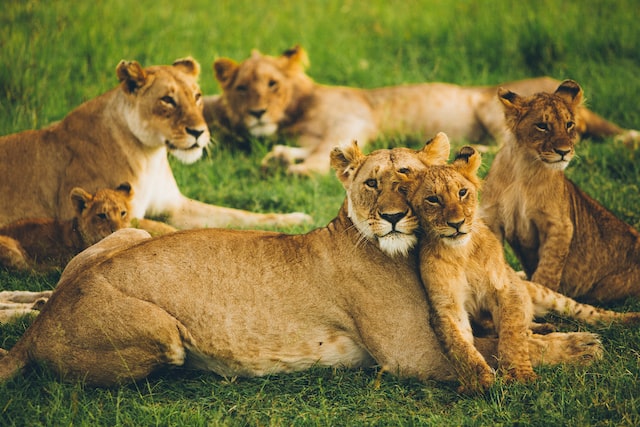Top 20 Interesting Facts About Lions

Lions are large cats that are known for their majestic manes and ferocious hunting skills. They are apex predators, which means that they are at the top of the food chain and have no natural predators of their own. They live in groups called prides, which typically consist of several related females, their offspring, and one or more dominant males.
Lions are found in Africa and parts of Asia, but they are highly endangered and their populations have declined dramatically in recent years due to habitat loss, poaching, and other human activities. Despite these challenges, lions continue to captivate the imagination and are widely regarded as one of the most iconic animals on the planet.
ये लेख हिंदी में Indian Curator (इंडियन क्यूरेटर) पर उपलब्ध हैं|
- Lions are the second-largest species of cat, after tigers. Male lions can weigh up to 550 pounds, while females can weigh between 265 and 395 pounds.
- Lions are known for their distinctive manes, which are larger and darker in males than in females. The mane is thought to protect the lion’s neck during fights with other males.
- Despite their fearsome reputation, lions are actually quite sociable animals, and they live in groups called “prides” that can include up to 30 individuals.
- Unlike other big cats, lions are not solitary hunters. Instead, they hunt in groups, using their numbers to surround and overwhelm their prey.
- Lions are strong swimmers, and they have been known to swim across rivers to catch their prey or escape danger.
- Although lions are often depicted as ferocious hunters, they actually spend most of their time resting and sleeping. They can sleep for up to 20 hours per day.
- Female lions are the primary hunters in a pride, and they do most of the work to feed the group. Male lions, on the other hand, mostly just defend the pride’s territory and mate with the females.
- Lion cubs are born with spots, which help to camouflage them in the grass. The spots gradually fade as the cubs grow older. However, faint spots often may still be seen on the legs and underparts.
- Lions have a unique roar that can be heard from up to five miles away. They use their roar to communicate with other lions and to warn off potential threats.
- Unlike other big cats, lions are not good at climbing trees. This is because of their size and weight, which makes it difficult for them to balance on branches.
- Lions have retractable claws, which they use to grip their prey and to climb trees (when they are young and lighter). When not in use, the claws are tucked away inside the lion’s paw.
- Although lions are apex predators, they are not immune to being hunted by other animals. In some parts of Africa, lions are killed by crocodiles when they come to drink at rivers.
- Lions are the national animals of several countries, including Ethiopia, Belgium, and Singapore.
- In some parts of Africa, lions are considered to be sacred animals, and they are protected by local communities.
- In addition to their manes, male lions also have a heavier build and a longer tail than females.
- Lions are currently classified as vulnerable on the IUCN Red List of Threatened Species, due to habitat loss and declining populations.
- Despite their fearsome reputation, lions are actually quite playful and social animals. They enjoy playing with each other, and they often groom each other to maintain social bonds.
- Like other cats, lions have a rough tongue that they use to groom their fur and to remove parasites. The tongue is also used to help lions tear apart their prey.
- Lions have a unique social structure, with females forming the core of the pride and males coming and going. When a new male takes over a pride, he will often kill the existing cubs to bring the females into heat.
- Despite their size and strength, lions are actually quite fast and agile. They can run at speeds of up to 50 miles per hour, and they are skilled climbers when they are young.
Sources:
- Lion | Smithsonian’s National Zoo
- Lion Fact Sheet | Blog | Nature | PBS
- The Weight & Height of Lions | Pets on Mom.com
- How Much Does a Lion Weigh? – Discovery UK
- https://www.quora.com/How-much-does-a-African-Lion-weigh-How-tall-can-they-get
- Top 10 facts about Lions | WWF
- Factsheet: Lions in the Wild
- Lion – Wikipedia
- Can Lions Swim? Do Lions Like Water? (Explained)
- https://lionhabitatranch.org/about/lion-facts
- https://justagric.com/do-lions-sleep-with-their-eyes-open/
- Can Lions Climb Trees? Why They Might, and Where to See Them Do It





